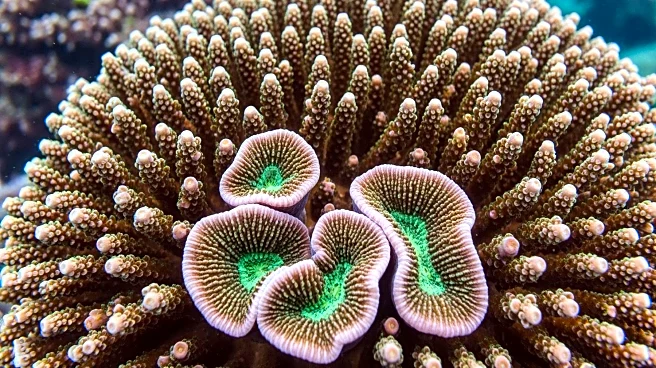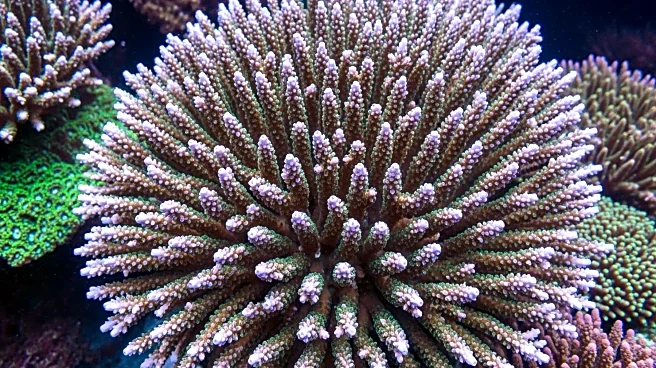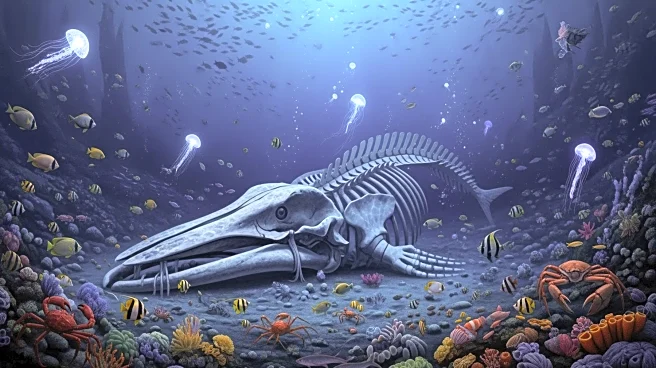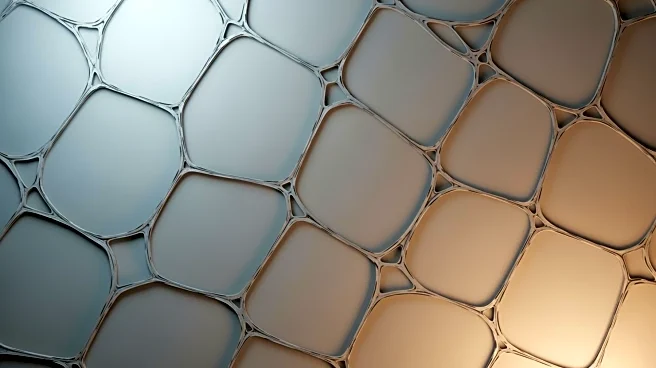What's Happening?
Researchers at the University of Pennsylvania have uncovered a unique mechanism in the red gorgonian coral, Leptogorgia chilensis, which could inspire advancements in bioengineering. The coral's skeleton,
composed of mineral particles in a gelatinous matrix, can compact itself to become rigid, a process known as 'granular jamming.' This phenomenon, previously studied in non-living materials like sand, has now been observed in a living organism for the first time. The study, published in the Proceedings of the National Academy of Sciences, suggests that the coral's ability to adjust its stiffness could be adapted for human applications, such as in surgical instruments or robotic arms.
Why It's Important?
The discovery of granular jamming in coral skeletons opens new avenues for bioengineering, particularly in creating materials that can change stiffness on demand. This could revolutionize fields like medicine and robotics, where adaptable materials are crucial. The research highlights the potential of biomimicry, where natural systems inspire technological innovations. By understanding the structural properties of coral skeletons, engineers can develop new materials with enhanced mechanical strength and efficiency, potentially leading to breakthroughs in manufacturing and medical devices.
What's Next?
The research team plans to explore other soft coral species to identify different sclerite shapes and properties that could further inform the design of synthetic materials. This ongoing research could lead to the development of new bioinspired materials with applications across various industries. The study also encourages further exploration of natural systems to uncover more biological mechanisms that can be harnessed for technological advancements.
Beyond the Headlines
This study not only highlights the potential of bioinspired engineering but also emphasizes the importance of preserving marine biodiversity. As researchers continue to explore the ocean's depths for innovative solutions, the conservation of marine ecosystems becomes increasingly vital. The findings also suggest a shift in how scientists approach material design, moving towards more sustainable and efficient methods inspired by nature.











